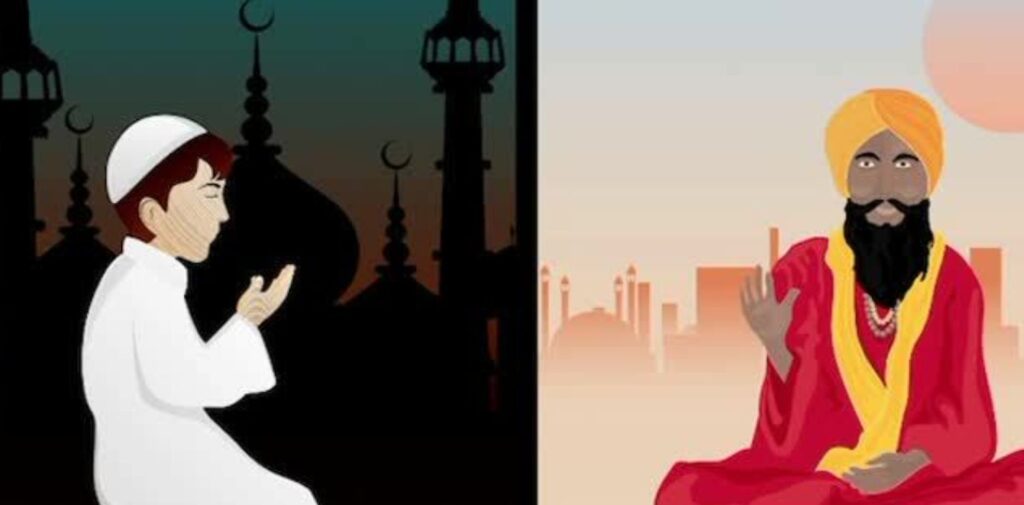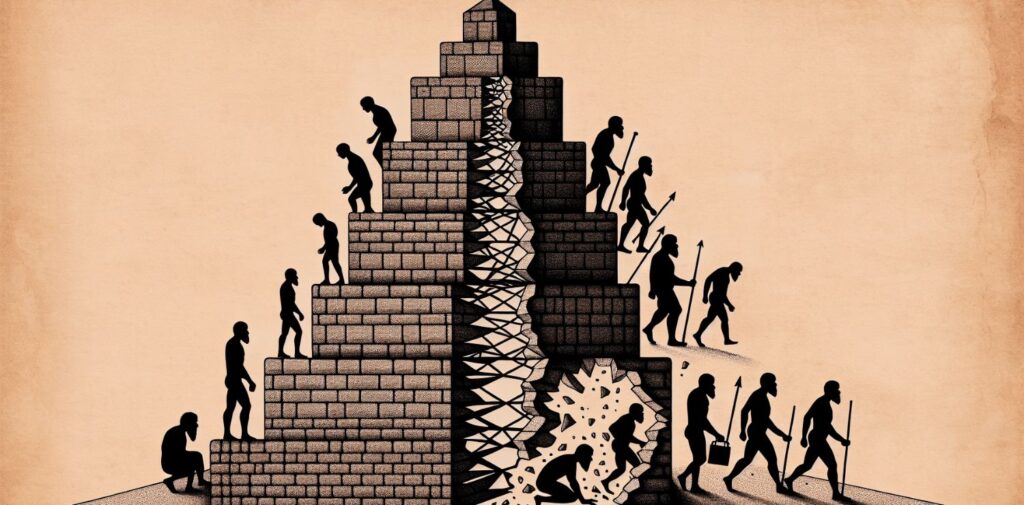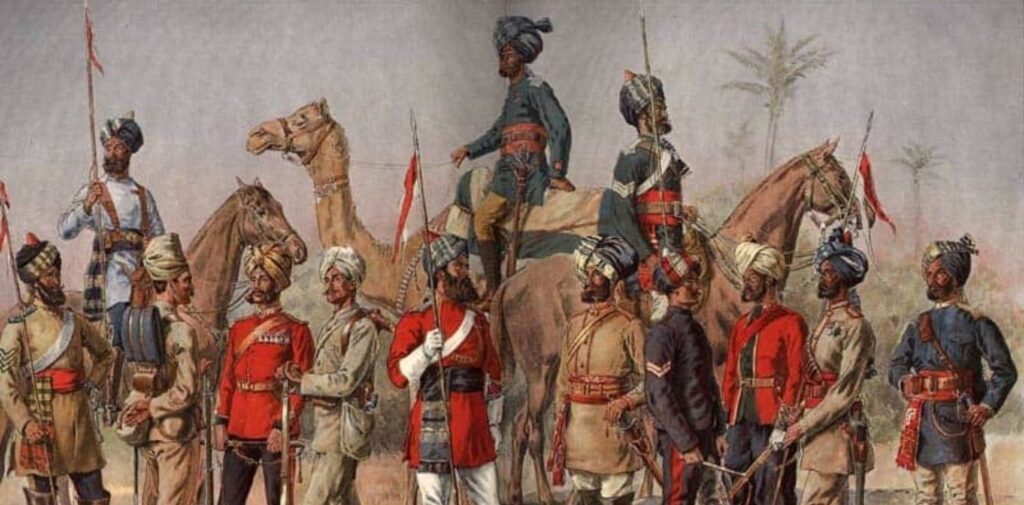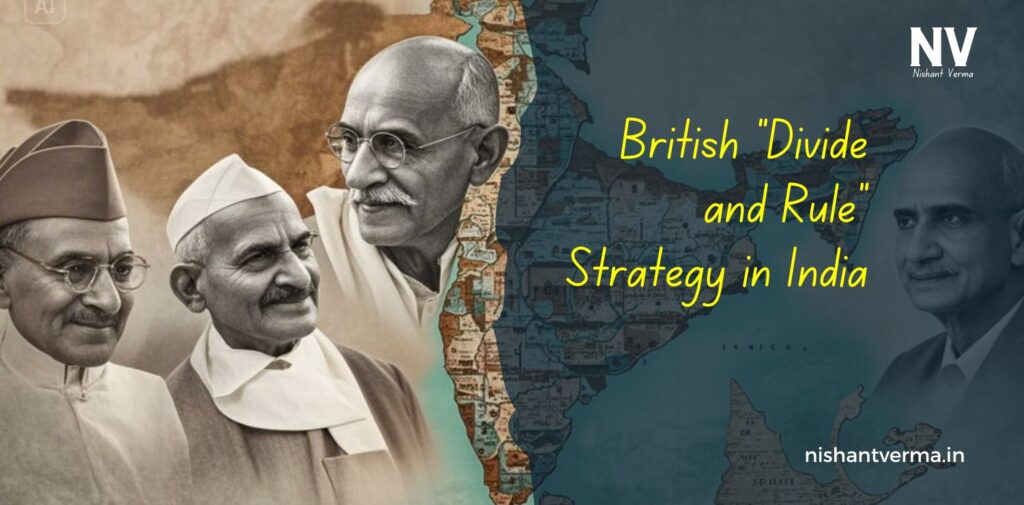The British colonization of India, which lasted from the mid-18th century until 1947, was marked by numerous strategies to maintain control over the vast subcontinent. One of the most effective and damaging tactics employed by the British was the “divide and rule” strategy. This strategy involved sowing divisions within Indian society and exploiting existing religious, ethnic, and social cleavages to weaken any united resistance against British rule.
The British understood that India, with its complex mix of languages, religions, and cultures, had the potential for internal division. Instead of confronting these divisions directly, they capitalized on them to create a situation where Indians were pitted against each other, making it easier for the British to maintain control.
Exploiting Religious Divides
One of the most significant ways the British implemented the divide-and-rule policy was by emphasizing the differences between Hindus and Muslims. India had a long history of cohabitation between these two religious communities, but tensions were often present, particularly due to the arrival of Islamic rulers in India and the various regional conflicts that followed.
The British systematically used these tensions to their advantage:
- Promoting Hindu-Muslim Disunity: The British often favoured one community over the other, depending on the political situation. For instance, they gave preferential treatment to the Muslims in the early years of British rule to gain support against the powerful Maratha and Rajput rulers. This created a sense of rivalry between Muslims and Hindus.
- Separate Electorates: In 1909, the British introduced the Morley-Minto Reforms, which provided separate electorates for Muslims. This meant that Muslims would vote for their representatives in legislative bodies, instead of participating in joint elections with Hindus. This decision deepened the rift between Hindus and Muslims and eventually led to the creation of separate political identities.
- Communal Riots: The British also encouraged communal tensions through policies that exacerbated conflicts, often turning a blind eye to communal violence. They would not intervene in localized communal tensions, allowing them to grow larger, and sometimes even provoked violence in areas where the threat of unity among Indians was high.

Caste System and Social Divisions
India’s caste system, though deeply entrenched in Indian society, was another area where the British played a role in deepening divisions. The British exploited caste divisions to weaken any collective resistance.
- Census and Caste Identity: The British implemented detailed censuses starting in 1871, which categorized people according to their caste, religion, and ethnicity. This system solidified caste distinctions that were previously more fluid and flexible. The British introduced policies that institutionalized these divisions, creating a rigid structure that would remain for years.
- Fostering Rivalries Between Castes: British policies often played one caste group against another. For instance, they created opportunities for higher castes in government services, while leaving lower castes marginalized. This further entrenched social divisions and created resentment among different sections of society. In some regions, the British encouraged conflicts between different castes, making it harder for lower castes to unite in a common struggle for rights.
- The Role of Dalits: The British also introduced policies that sought to “improve” the condition of the lower castes, especially the Dalits (previously known as untouchables). While this could have been seen as a progressive step, it was often done in a way that ensured Dalits were kept separate from the larger Hindu society, further dividing Indian society along social lines.

Regionalism and Language Politics
India is a vast country with a diversity of languages, cultures, and regional identities. The British used this diversity to prevent the rise of a unified national identity.
- Encouraging Regional Identities: The British administration promoted the development of separate regional identities by dividing India into provinces based on linguistic and ethnic lines. For example, in the 19th century, the British created new administrative boundaries that often ignored existing regional and cultural ties, thus setting up rivalries between different linguistic or ethnic groups.
- Language Policies: The British also promoted English as the medium of education and administration, which created a class of educated elites who were loyal to British interests. This undermined the use of vernacular languages and led to a disconnection between the common people and the educated elites.
- Divide Between Urban and Rural Areas: The British used the growing differences between urban and rural India as another point of division. The urban areas, which were more directly governed by the British, became centres of administration and commerce, while rural India remained largely disconnected from the political developments in cities.
The Role of the British Army and the Police
The British also maintained control over India through a well-organized colonial army and police force that reflected the divide-and-rule policy.
- Use of Indian Soldiers: The British relied heavily on Indian soldiers (sepoys) to maintain control over the country. However, these soldiers were often divided along ethnic, caste, and regional lines, which prevented them from uniting against British rule. The British favoured certain groups of people over others, which created loyalty among some while fueling divisions among others.
- Divide in the Police Force: The police force in colonial India was also divided along caste, ethnic, and religious lines. This division ensured that no single group could rise against the British colonial state as a unified force.

Economic Divide and Exploitation
The British also used economic policies to create divisions in Indian society. By imposing taxes and focusing on exploiting particular regions for specific resources, they created a dependent economy that kept India’s different regions and communities at odds.
- Regional Exploitation: The British extracted raw materials from different parts of India, concentrating industries and wealth in specific regions, such as Bengal and Bombay. This led to the growth of some urban centres while leaving rural areas impoverished. The inequalities between regions and communities created a sense of rivalry and competition, rather than solidarity.
- Land Revenue System: The introduction of the Permanent Settlement in Bengal in 1793 and other exploitative land revenue systems caused severe economic distress for farmers. The British favoured wealthy landlords over peasants, creating further division between the land-owning class and the rural labourers.
Political Divide and Lack of Unity
The British also used divide-and-rule tactics in the political arena. They ensured that Indian leaders were not able to form a united front against colonial rule.
- Divide in the Indian National Congress (INC): The British manipulated divisions within the INC, the main political party fighting for Indian independence. In the early years, the INC was a moderate body that sought reforms within the British system. Over time, the British encouraged divisions between moderates and extremists, eventually playing a role in the split of the INC in 1907 at the Surat Session.
- Support for Rulers: The British also allied themselves with local kings and rulers, ensuring their loyalty through favours, privileges, and support. This helped prevent a united resistance from emerging from Indian rulers.
Conclusion: The “divide and rule” strategy
The “divide and rule” strategy was central to British colonial rule in India. By emphasizing and deepening existing divisions—whether religious, social, regional, or political—the British made it difficult for Indians to unite against them. This tactic allowed the British to maintain control over India for nearly two centuries. The legacy of these divisions still affects Indian society today, as communal tensions, regional disparities, and caste-based divisions continue to play a role in the country’s social and political landscape.




